Southern Utah is a paradise for adventurers, offering a stunning mix of red rock landscapes, world-famous national parks, and hidden oases. Among these treasures, Zion National Park stands out as a must-visit destination for travelers seeking breathtaking scenery, thrilling adventures, and unforgettable experiences. Whether you are planning your first visit or returning to explore more, knowing a few key facts about Zion can dramatically improve your trip. This guide shares five essential things to know before you go to Zion National Park, helping you navigate the crowds, choose the perfect time to visit, secure lodging, master the shuttle system, and embrace the park’s adventurous spirit.
1. Prepare for the Crowds: Timing Is Everything
Zion National Park is one of the most visited parks in the United States, attracting millions of visitors each year. Unlike many larger parks, Zion’s compact size means that the crowds can feel especially intense. This popular destination experiences congestion not just on the trails, but also at entrance stations, parking lots, and shuttle stops. Understanding the dynamics of crowd flow can make a significant difference in your experience.
Visitors often report that Zion’s beauty is undeniable, but the dense crowds can sometimes overshadow the enjoyment. If you don’t plan around the busy times, you might find yourself waiting in long lines to enter the park, struggling to find parking, or getting stuck in shuttle queues.
To avoid frustration, try to avoid entering the park during peak hours—typically mid-morning and early afternoon. Early mornings or late afternoons are better times to get through the entrance stations quickly. Parking is limited and fills fast, especially near the Zion Canyon Visitor Center and Springdale. Knowing when and where to park, and when to leave your car to catch the shuttle or walk, can save you hours of waiting.
For those looking for a detailed strategy, there are itineraries available that provide hour-by-hour guidance on avoiding crowds and maximizing your time in the park. This kind of planning helps you experience Zion’s wonders without feeling overwhelmed by the throngs of visitors.
2. Zion Is Fabulous Year-Round: Choosing the Right Season
Despite the crowds, Zion National Park offers incredible experiences throughout the year. The park’s high season runs from March through October, coinciding with warmer weather and longer daylight hours. During these months, especially around spring break and summer, expect the largest crowds. However, spring (March-April) and fall (September-October) offer pleasant weather and somewhat lighter crowds, making them ideal times to visit if you prefer a balance between comfort and accessibility.
Winter in Zion brings a quieter atmosphere and the chance to see snow dusting the red rock formations, creating a stunning contrast. Some trails at higher elevations, such as Angels Landing or Observation Point, may be icy or snow-covered, so hikers should be prepared for winter conditions and possible temporary trail closures. Lower elevation hikes like Emerald Pools, Riverside Walk, and the Pa’rus Trail usually remain accessible and snow-free, allowing visitors to enjoy hiking even in the colder months.
The park’s infrastructure, including Zion Lodge, roads, and restaurants, remains open year-round. Plus, the nearby town of Springdale provides additional lodging and dining options regardless of the season. This means visitors can enjoy Zion’s beauty and activities any time of year, with the added benefit of fewer crowds in the off-season.
For those interested in detailed month-by-month insights on weather, trail accessibility, and crowd levels, there are comprehensive guides available that help travelers pick the best time for their visit based on personal preferences and planned activities.
3. Book Your Lodging in Advance: Stay Close to the Action
Lodging near Zion National Park is highly sought after, and availability can be limited, especially during peak seasons. While some travelers opt to stay in Springdale, the town just outside the park’s south entrance, securing accommodation inside the park itself offers a distinct advantage—especially when it comes to parking and shuttle access.
Inside Zion, there are two main campgrounds—Watchman and South Campground—as well as the Zion Lodge, which is the only full-service lodge inside the park. These locations place visitors right on or near the Zion Canyon Scenic Drive, where the mandatory shuttle operates for most of the year. Having reserved parking at these sites means you won’t have to fight for a spot in the often-overcrowded lots at the Visitor Center or in Springdale, and you can hop on the shuttle from your lodging without the hassle of commuting.
If staying inside the park is not possible, Springdale remains a great option due to its proximity to the park entrance. However, choosing lodging near a shuttle stop or with ample parking is crucial to avoid daily parking struggles. This proximity reduces shuttle wait times and maximizes the time available for exploring the park’s trails and sights.
Planning your accommodation early is essential to ensure you get the best location and avoid last-minute stress. Booking well in advance can also provide better rates and more choices, whether you prefer camping, a rustic lodge, or a comfortable rental home.
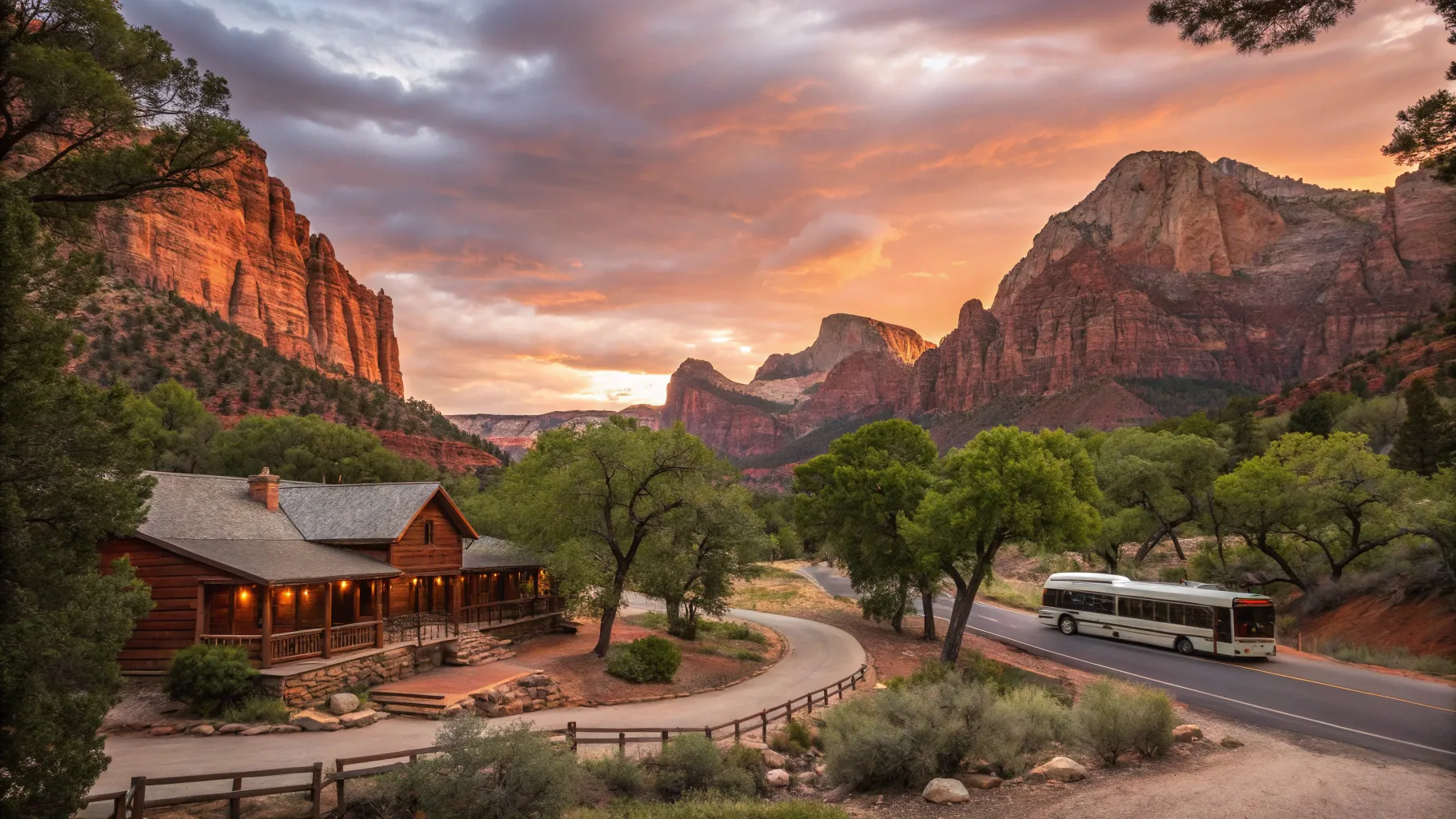
4. Master the Mandatory Shuttle System
One of the most important aspects of visiting Zion National Park is understanding the shuttle system. To manage the heavy visitor traffic and protect the park’s natural environment, Zion operates a mandatory shuttle service along the Zion Canyon Scenic Drive from March through November, plus select weekends in winter months.
Private vehicles are not allowed on this scenic drive during shuttle season, so visitors must park in designated lots—usually at the Visitor Center or in Springdale—and board the shuttle to access popular trailheads and viewpoints such as Angels Landing, Emerald Pools, and The Narrows.
The shuttle route begins at the Zion Canyon Visitor Center and makes several stops along the way, allowing visitors to hop on and off as they explore different parts of the canyon. While the shuttle makes visiting the park more manageable, the shuttle stops and lines can become crowded during peak hours, so timing your shuttle rides is key to avoiding long waits.
For those staying in the park’s campgrounds or Zion Lodge, shuttle access is even more convenient, as parking is guaranteed and shuttles can be boarded nearby. Additionally, the town of Springdale operates its own shuttle service that connects lodging, restaurants, and the park entrance, making it easier to get into Zion without driving.
Learning how to navigate the shuttle routes, knowing the busiest times, and understanding where parking is available will enhance your Zion experience and reduce stress. There are detailed shuttle guides and itineraries that provide tips for finding parking, shuttle schedules, and less crowded travel windows.
5. Embrace the Spirit of Adventure in Zion
Zion National Park is renowned for its adventurous spirit and offers some of the most exhilarating outdoor experiences in the country. The park attracts thrill-seekers and nature lovers alike with its iconic hikes, slot canyons, and unique landscapes that invite visitors to push their limits and explore beyond the ordinary.
One of the most famous hikes is Angels Landing, a challenging trail that culminates in a narrow ridge where hikers hold onto chains bolted into the rock to navigate steep drop-offs. This adrenaline-pumping route offers unparalleled panoramic views of Zion Canyon and is a bucket-list experience for many.
The Narrows provides a different kind of adventure—hiking through the Virgin River inside a slot canyon. Walking in the river, surrounded by towering sandstone walls, creates a surreal and memorable experience. For those seeking technical canyoneering, Zion’s lesser-known slot canyons like The Subway offer thrilling routes requiring permits and specialized equipment.
Beyond these well-known adventures, Zion also has “secret hikes”—less frequented trails that lead to stunning vistas and hidden gems away from the crowds. These trails are often unmarked and require some local knowledge or a good itinerary to discover.
Additionally, the greater Southern Utah area surrounding Zion is a hub for outdoor recreation, including mountain biking, ATV riding, and more. The region’s extensive trail systems and rugged terrain make it a playground for adventure enthusiasts of all kinds.
Families with young children will find Zion welcoming and accessible, but the park’s adventurous offerings particularly appeal to teens and adults looking for thrilling experiences and unique challenges.
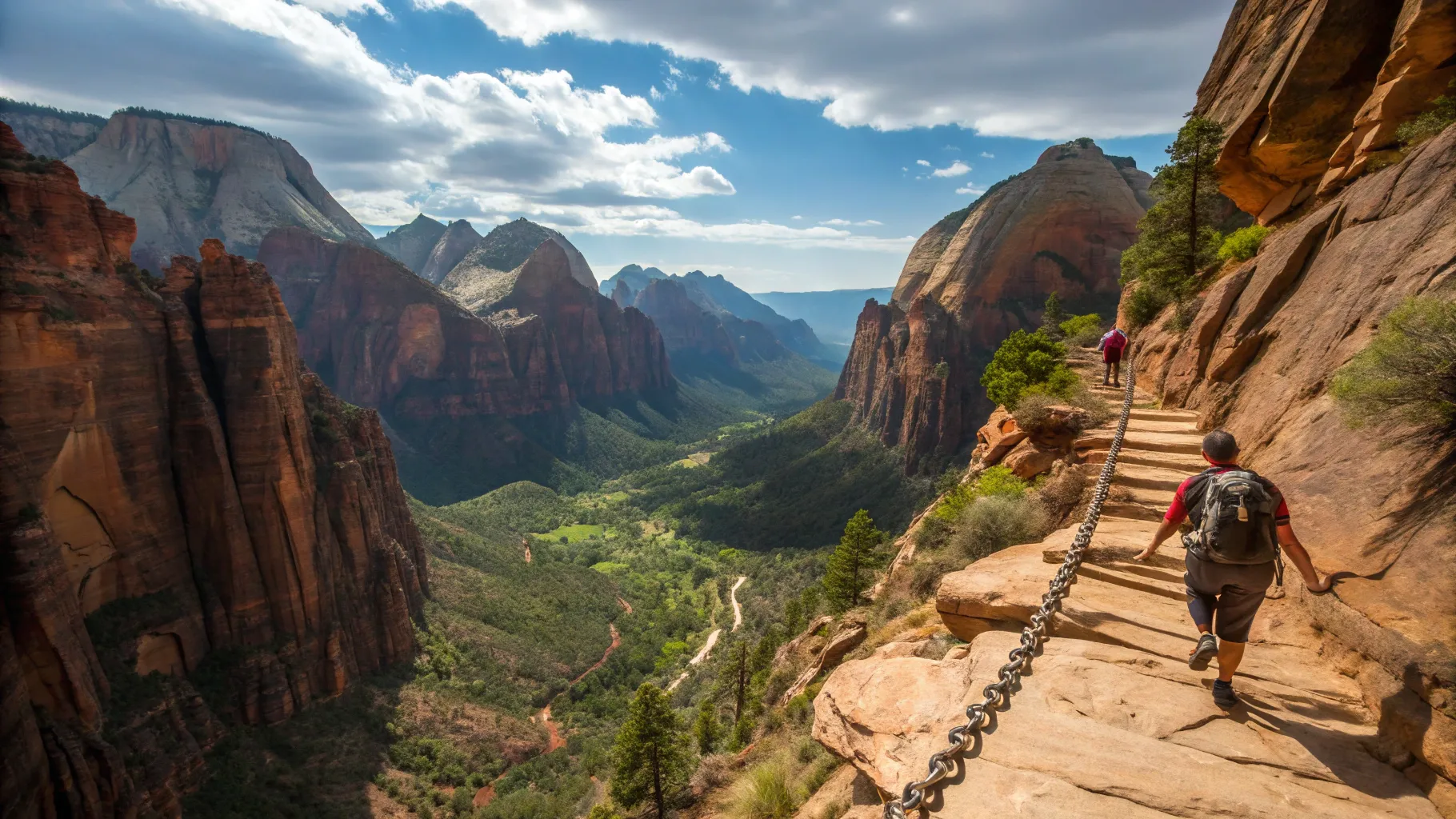
Planning Your Stay Near Zion National Park
For travelers seeking a comfortable home base near Zion, Southern Utah offers an array of luxury vacation rentals that combine convenience, privacy, and stunning natural surroundings. Choosing a vacation rental with amenities such as a full kitchen, outdoor patio, and proximity to trailheads can elevate your visit from good to unforgettable.
Many vacation rentals in towns like Springdale and St. George provide easy access to Zion National Park while offering a peaceful retreat after a day of hiking and exploring. Consider browsing Zion National Park vacation rentals to find accommodations that suit your group size and preferences.
For those interested in exploring more of Southern Utah’s outdoor wonders, guides like the Top 5 Must-Do Activities in Southern Utah and Top Favorite Vacation Rentals Near Zion National Park offer valuable insights and recommendations. Planning ahead ensures you enjoy both Zion’s grandeur and the comforts of a well-appointed rental.
Frequently Asked Questions About Visiting Zion National Park
When is the best time to visit Zion National Park to avoid crowds?
The best times to visit Zion with fewer crowds are early spring (March-April) and fall (September-October). Winter months also see fewer visitors, but some trails may be icy or closed.
Is the Zion shuttle mandatory year-round?
The shuttle is mandatory from March through November and on select weekends during winter holidays. It is required for access to the Zion Canyon Scenic Drive during these periods.
Can I drive my own car to all parts of Zion National Park?
No. During shuttle season, personal vehicles are not allowed on the Zion Canyon Scenic Drive. However, you can drive your car to the east side of the park, such as Checkerboard Mesa, without needing to use the shuttle.
What are some adventurous hikes to try in Zion?
Popular adventurous hikes include Angels Landing, The Narrows, and The Subway slot canyon. There are also several less-known “secret hikes” for those seeking quieter, unique trails.
Where should I stay to maximize my Zion experience?
Staying inside the park at Zion Lodge or campgrounds offers the advantage of guaranteed parking and easy shuttle access. If unavailable, lodging in Springdale near shuttle stops is the next best option.
Final Thoughts
Zion National Park is a jewel of Southern Utah that offers unparalleled natural beauty and adventure. While its popularity can bring challenges like crowds and parking difficulties, a little preparation goes a long way. Knowing when to visit, where to stay, how to navigate the shuttle system, and what adventures to pursue will transform your trip into a smooth and memorable journey.
Whether you plan to hike the iconic Angels Landing, explore the Narrows, or simply soak in the stunning vistas, Zion promises an experience that will stay with you forever. For travelers seeking a comfortable and luxurious place to return to after a day of adventure, Southern Utah’s vacation rentals provide the perfect home base. Explore Stay Copper Rock for exceptional rental options that complement your Zion adventure.

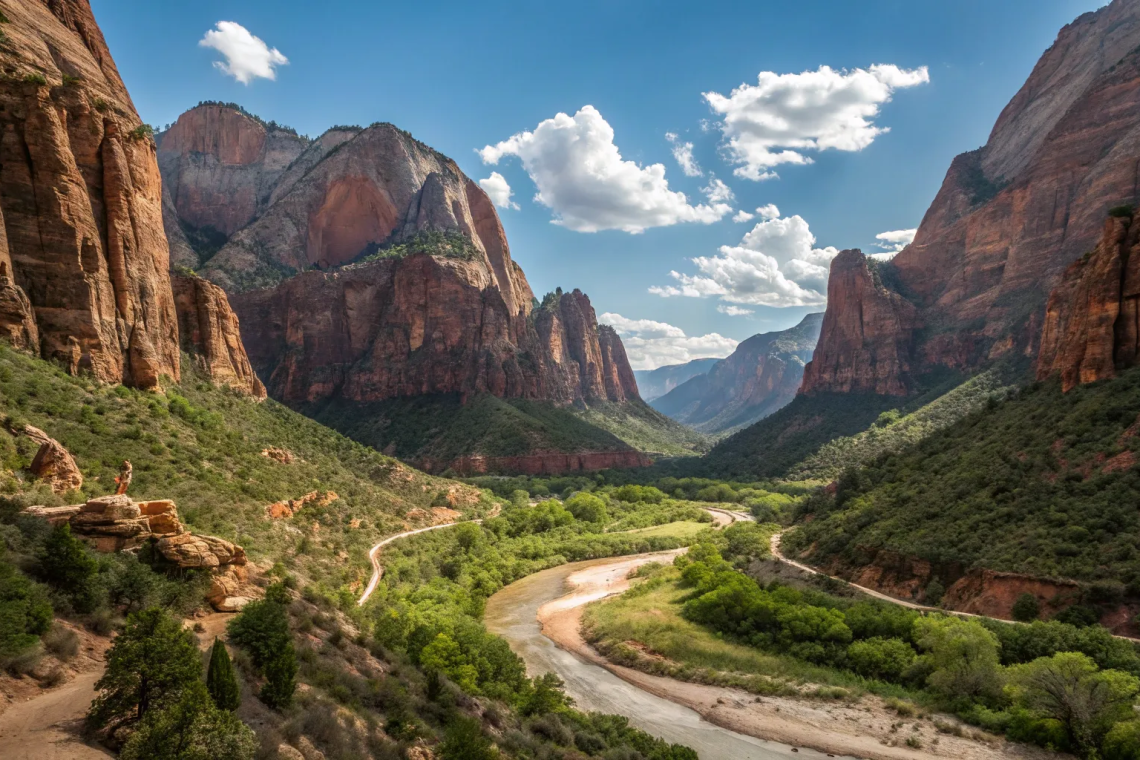


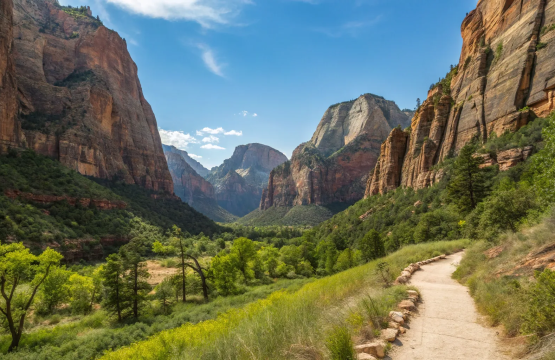
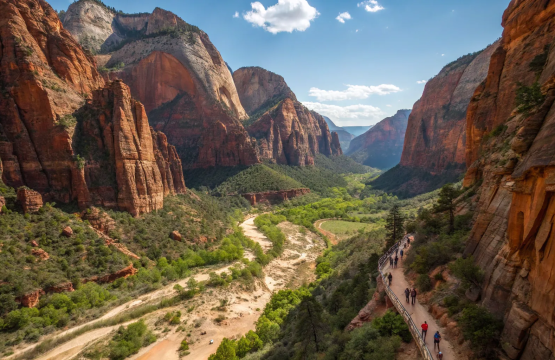
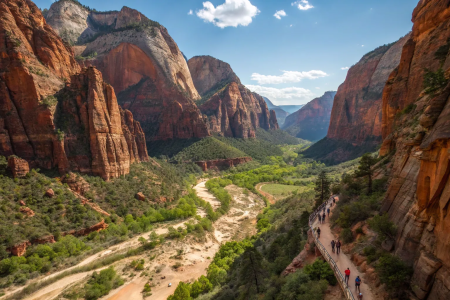
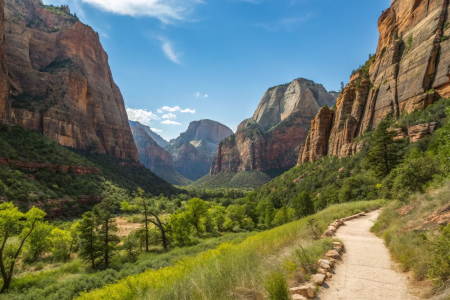

Join The Discussion